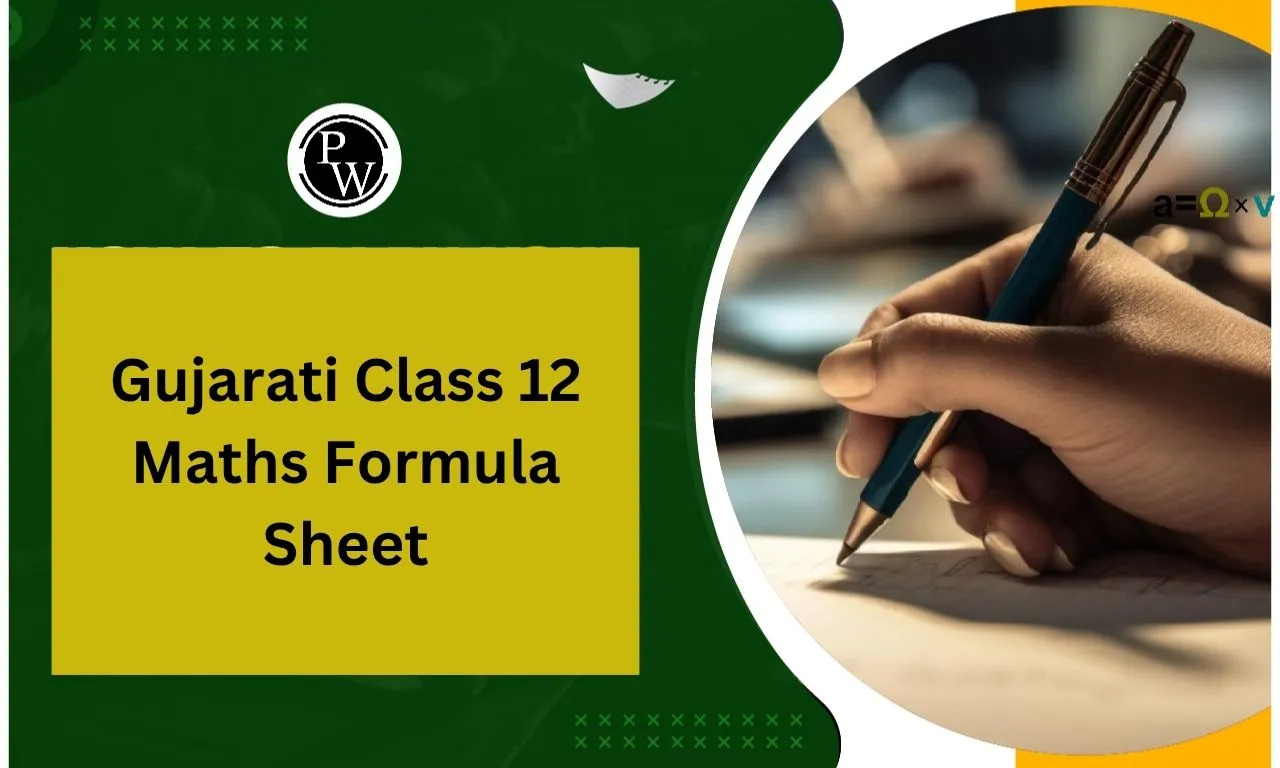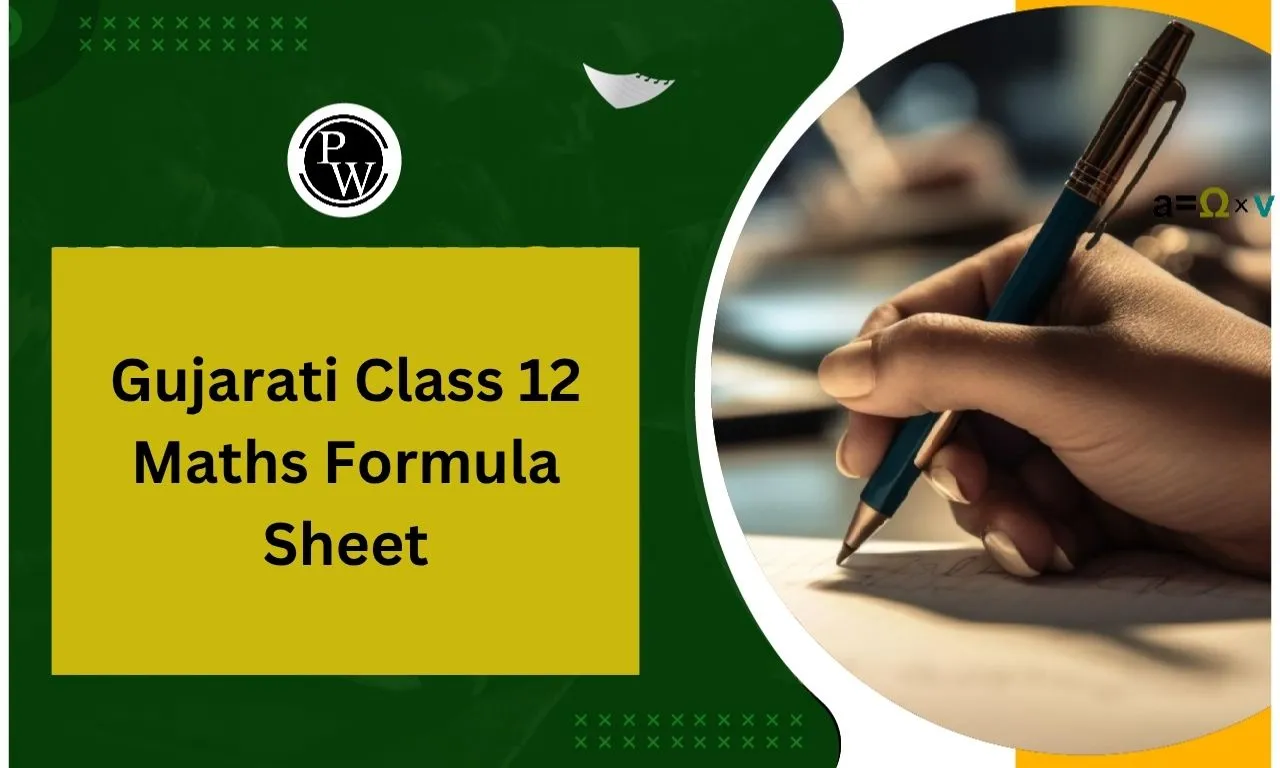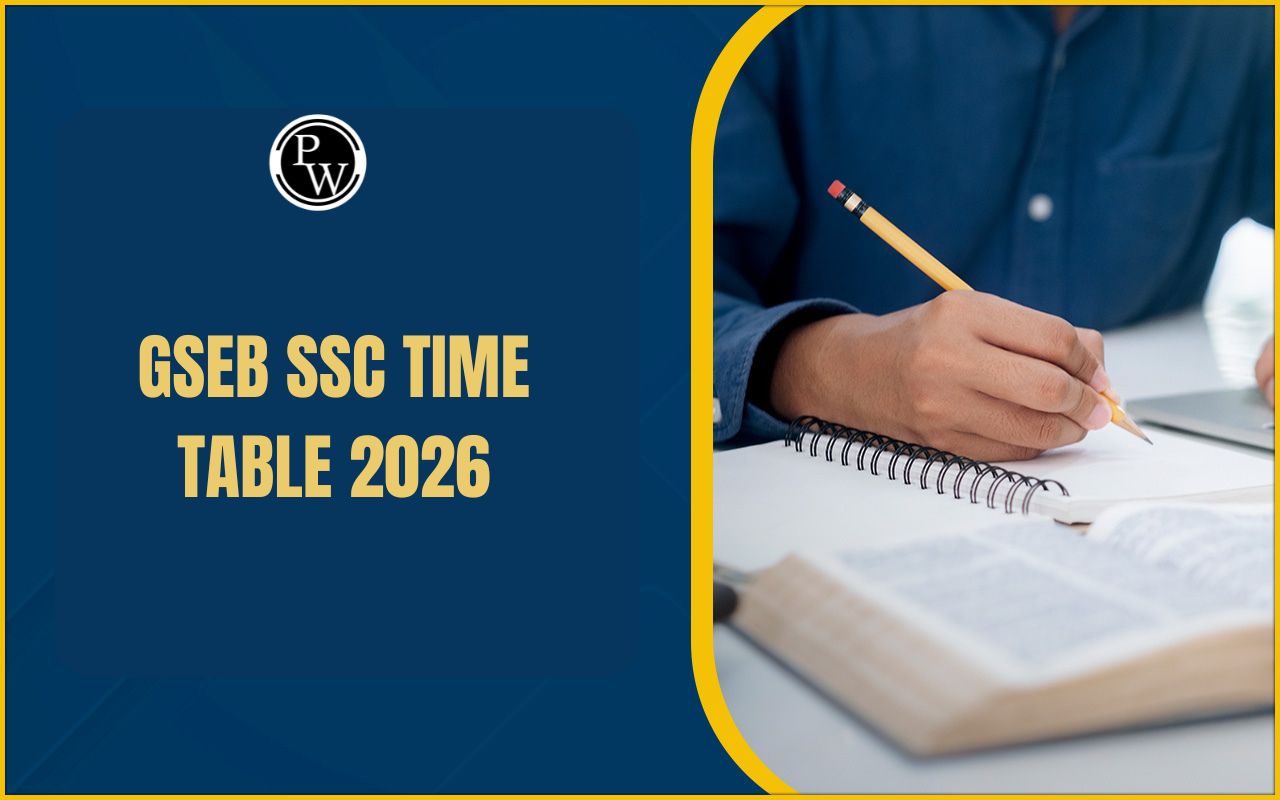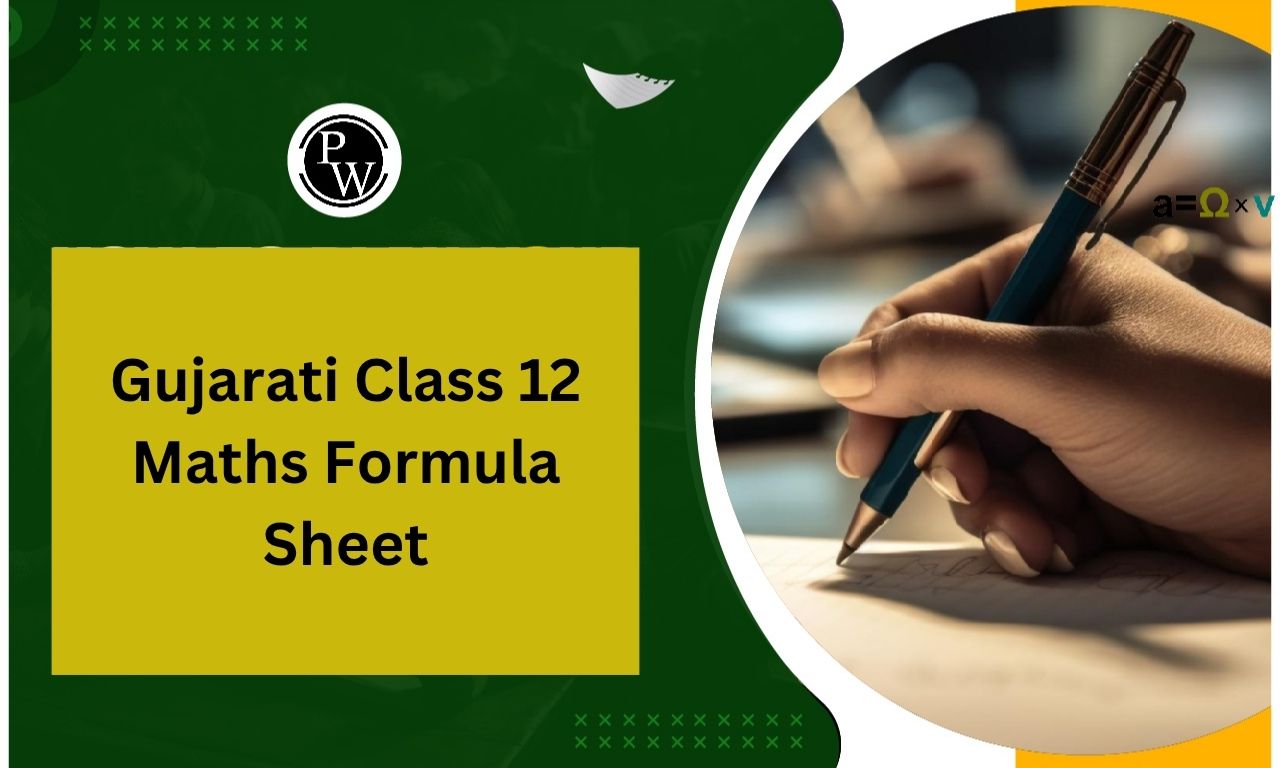

Gujarati Class 12 Maths Formula Sheet is a comprehensive and practical study tool created especially for students preparing for board exams or GUJCET Exam. It includes all key formulas from essential chapters—like Calculus, Vectors, Probability, Algebra, and 3D Geometry—presented in clear, simple Gujarati.
This structured sheet helps you revise concepts quickly, understand difficult formulas effortlessly, and practice efficiently during the last days before exam. Downloading it as PDF increases your confidence level and enhances exam performance by providing a reliable reference at your fingertips.
Gujarati Class 12 Maths Formula Sheet
Explore the table below for topic-wise math formulas along with easy-to-download PDF links. This layout allows students to access focused information fast, with each chapter isolated for quick revision.
|
Gujarati Class 12 Maths Formula Sheet |
|
|---|---|
|
Topic |
Download PDF |
|
Vector Formula |
|
|
Three Dimension Geometry Formula |
|
|
Relation and Function Formula |
|
|
Probability Formula |
|
|
Matrix Formula |
|
|
Linear Programming Problems Formula |
|
|
Inverse Trigonometric Functions Formula |
|
|
Integration Formula |
|
|
Determinant Formula |
|
|
Definite Integration Formula |
|
|
Continuity and Differentiability Formula |
|
|
Application of Derivatives Formula |
|
|
Application of Integration Formula |
|
Detailed Overview of Gujarati Class 12 Maths Formula Sheet
1. Vector Formula
This chapter focuses on vector calculations—a subject that combines geometry and algebra. It includes:
-
Magnitude of a vector: |a| = √(a₁² + a₂² + a₃²)
-
Direction cosines: l = a₁/|a|, m = a₂/|a|, n = a₃/|a|
-
Dot product: a·b = |a||b| cosθ = a₁b₁ + a₂b₂ + a₃b₃
-
Cross product: a × b = (a₂b₃ − a₃b₂, a₃b₁ − a₁b₃, a₁b₂ − a₂b₁)
-
Scalar projection: compₐ b = (a·b) / |a|
-
Vector projection: projₐ b = [(a·b)/|a|²]·a
Using these formulas, students can solve geometry problems related to lines, planes, and spatial angles effortlessly.
2. Three Dimension Geometry Formula
Understanding 3D space becomes simpler with this section, which covers:
|
Concept |
Formula |
Description |
|
Distance between (x₁,y₁,z₁) and (x₂,y₂,z₂) |
√[(x₂−x₁)² + (y₂−y₁)² + (z₂−z₁)²] |
Finds point-to-point distance |
|
Line equation |
(x − x₁)/l = (y − y₁)/m = (z − z₁)/n |
Direction ratios l, m, n |
|
Angles between lines/planes |
cosθ = (u·v)/( |
u |
These formulas help you visualize and solve questions on length, angle, and orientation in three-dimensional space.
3. Relation & Function Formula
This section highlights key properties of functions and relations:
-
One‑one function: f(a) = f(b) implies a = b
-
Onto function: range = domain size
-
Invertible function: has a unique inverse f⁻¹
-
Composition: (f∘g)(x) = f(g(x))
-
Identity function: f(f⁻¹(x)) = x
These basic yet powerful concepts lay the foundation for advanced function-based algebra problems and mapping.
4. Probability Formula
Master probability with chapter highlights:
-
Conditional probability: P(A|B) = P(A ∩ B)/P(B)
-
Bayes’ theorem: P(Bᵢ|A) = [P(Bᵢ)·P(A|Bᵢ)] / Σ P(Bⱼ)·P(A|Bⱼ)
-
Law of total probability: P(A) = Σ P(Bᵢ)P(A|Bᵢ)
-
Independence: P(A ∩ B) = P(A)·P(B)
-
Permutation & combination basics
These formulas are essential for solving real-life chance-based problems like drawing cards or selecting teams.
5. Matrix Formula
This chapter simplifies matrix algebra:
-
Addition/Subtraction: element-wise
-
Scalar multiplication: c·A = [c·aᵢⱼ]
-
Matrix multiplication: row of A × column of B
-
Identity & transpose: I·A = A, (Aᵀ)ᵢⱼ = aⱼᵢ
-
Determinants:
-
2×2: |a b; c d| = ad − bc
-
3×3: expansion by minors
These basics are used in solving linear equations, computing inverses, and more.
6. Linear Programming Problems Formula
Learn to set up and solve optimization questions:
-
Objective function: Z = ax + by
-
Constraints: linear inequalities
-
Graphical methods: corner-point theorem
This chapter integrates both algebraic techniques and graphical interpretations to solve resource optimization problems.
7. Inverse Trigonometric Functions Formula
Understand inverse relations with:
-
Primary ranges: sin⁻¹(x) ∈ [−π/2, π/2], cos⁻¹(x) ∈ [0, π], etc.
-
Identities: sin⁻¹(x) + cos⁻¹(x) = π/2
These are critical for integration methods and simplifying complex mathematical expressions.
8. Integration Formula
Covers both fundamental and advanced integration techniques:
-
∫ xⁿ dx = xⁿ⁺¹/(n + 1) + C
-
Standard integrals like ∫ eˣ dx, ∫ cos x dx
-
Techniques: substitution, parts, partial fractions
-
Definite integrals and their properties
Calculus problems involving area, accumulation, and function change rely heavily on these.
9. Determinant Formula
Solidify your understanding of determinants:
-
2×2: ad − bc
-
3×3: expansion method
-
Properties: singular/invertible matrices, zero determinant
Knowing determinants helps in Cramer’s rule and solving linear matrix equations.
10. Definite Integration Formula
Important for area calculation:
-
∫ₐᵇ f(x) dx = F(b) − F(a)
-
Properties: additive intervals, limits reversal
-
Key use case: area between curves
These formulas are often tested directly on board exams.
11. Continuity & Differentiability Formula
Fundamentals of calculus:
-
Continuity: limₓ→a f(x) = f(a)
-
Derivative definition: f′(x) = limₕ→0 [f(x + h) − f(x)]/h
-
Rules: product, quotient, chain
This section prepares you for derivative-based problem-solving and curve analysis.
12. Application of Derivatives Formula
Real-world calculus in action:
-
Tangent: y – y₀ = f′(x₀)(x − x₀)
-
Normal: slope = −1/f′(x₀)
-
Increasing/decreasing: based on sign of f′
-
Maxima/minima: f′ = 0 and f″ test
Understanding how functions behave, rise, or fall, helps in sketching and interpreting graphs.
13. Application of Integration Formula
Useful for geometry and physics:
-
Area between curves: ∫ₐᵇ [f(x) – g(x)] dx
-
Volume and arc-length formulas
These are practical applications of calculus techniques.
Advantages of Using Gujarati Class 12 Maths Formula Sheet
-
Chapter-wise Organization: Study each topic separately and revise faster.
-
Simple Gujarati Language: Easy to understand and memorize formulas.
-
Highly Effective for Quick Revision: No need to flip through bulky textbooks.
-
Exam Time Saver: Recalls formulas instantly during tests.
-
Stronger Concepts: Helps you understand tricky subjects like vectors and calculus.
-
Offline Access (PDF): Available anytime on mobile/computer without internet.
-
Boosts Confidence: Having formulas on hand reduces stress before exams.
- Useful for Competitive Exams: Great foundation for GUJCET, JEE, and other entrance tests.
Gujarati Class 12 Maths Formula Sheet FAQs
What topics are included in the Gujarati Class 12 Maths Formula Sheet?
Is the formula sheet available in PDF format?
Can this sheet help in last-minute revision?
Is the formula sheet useful for GUJCET or JEE exams?










